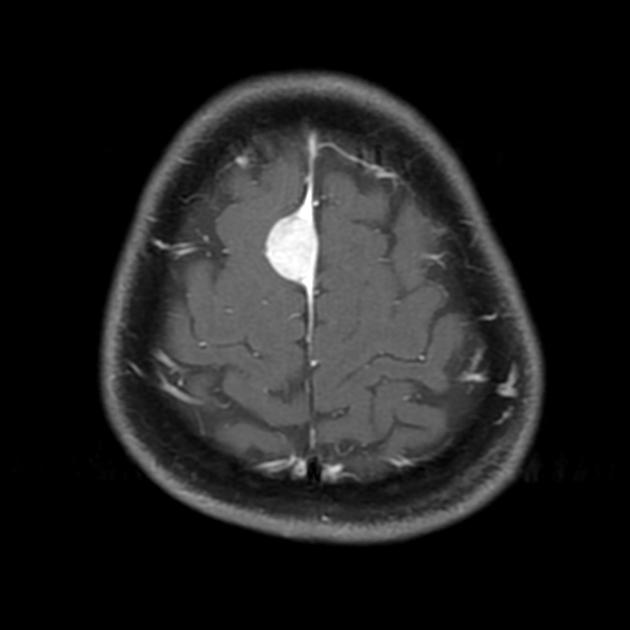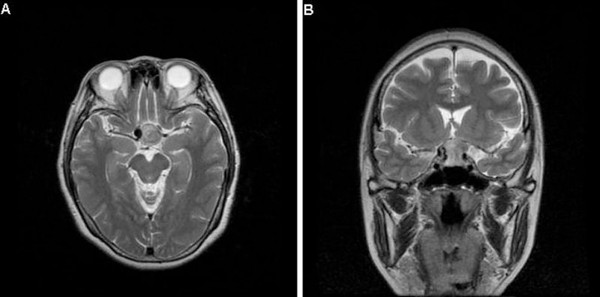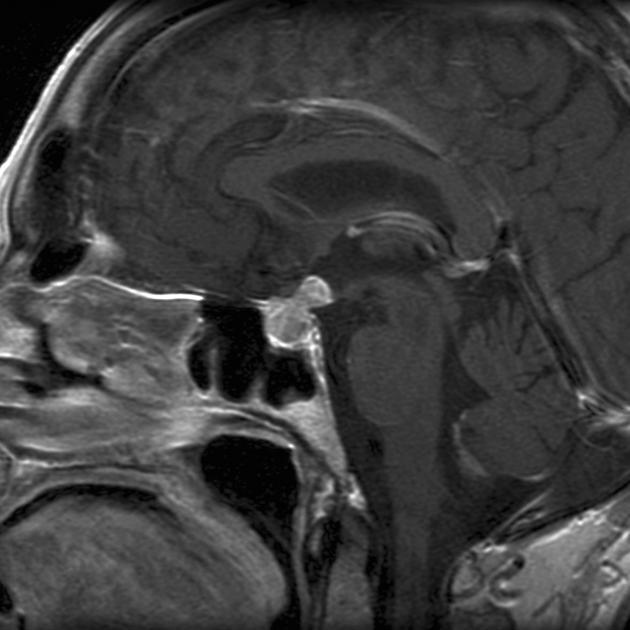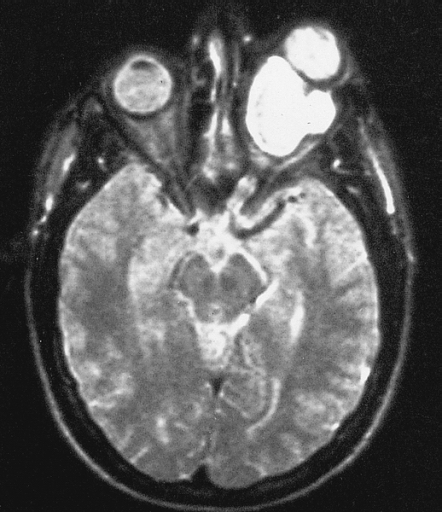pituicytoma
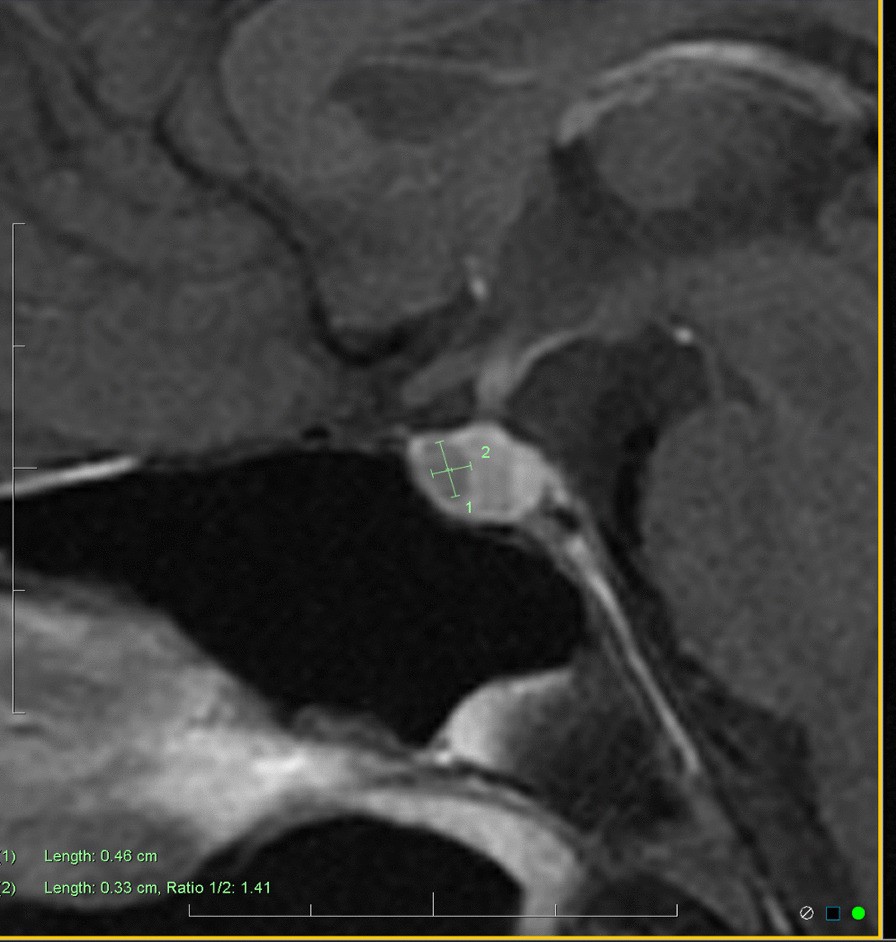
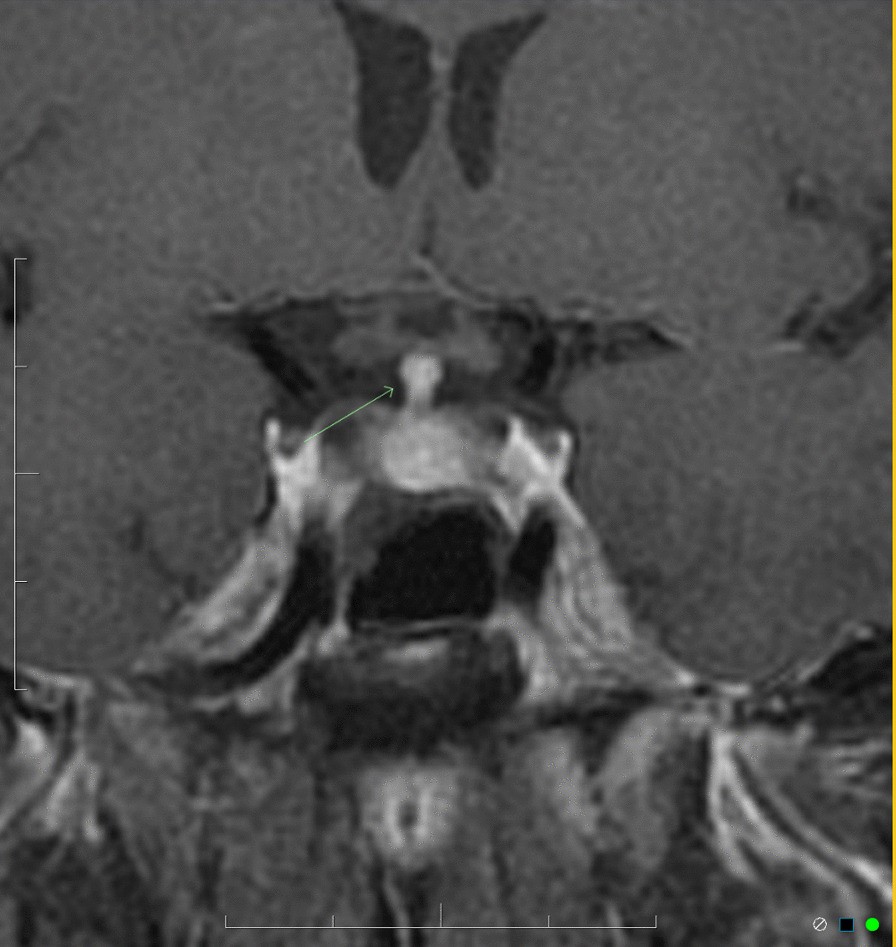

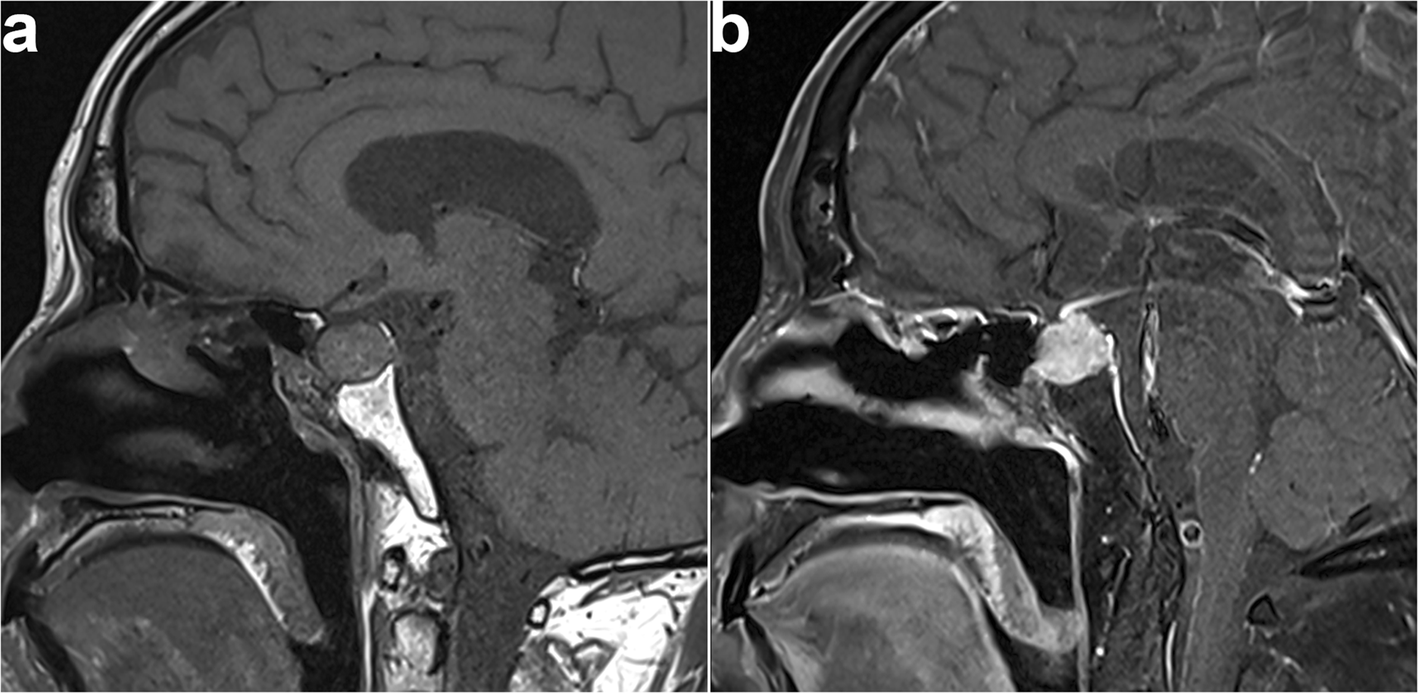



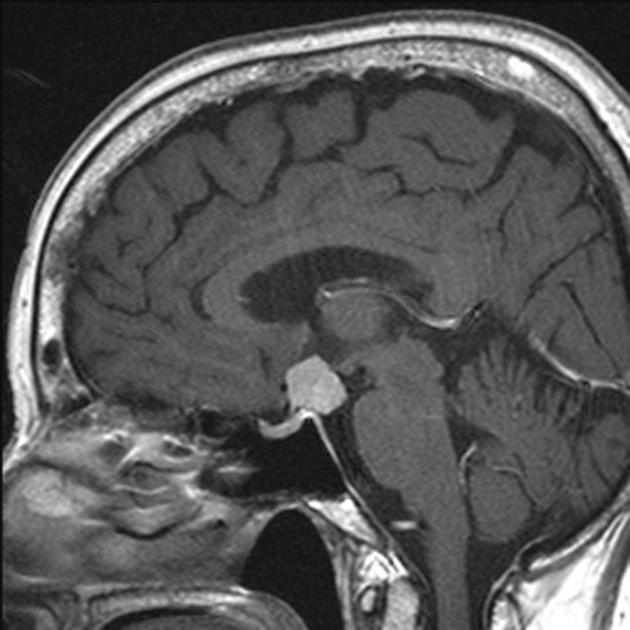
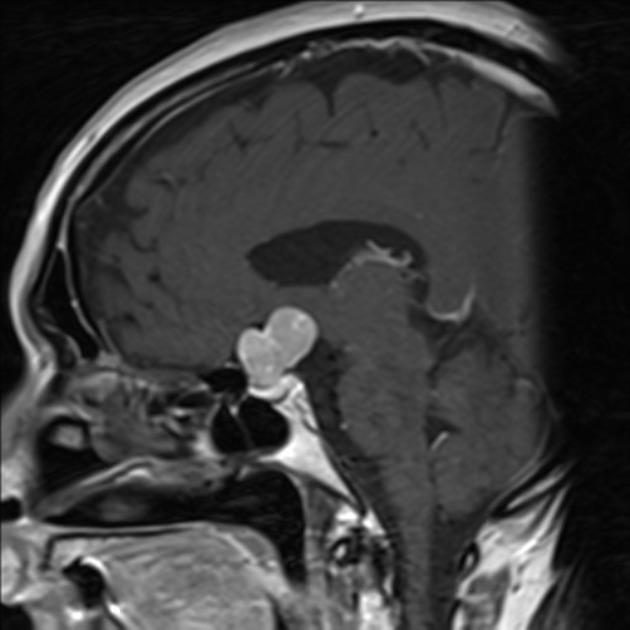

Pituicytomas are rare indolent glial tumors presumably arising from pituicytes and only found in the neurohypophysis and infundibulum of the pituitary gland.
Terminology
There is much confusion in the literature as to what exactly a pituicytoma is, with the term used to synonymously particularly in the older literature by some authors for a number of other tumors, now recognized to be separate lesions, including :
- granular cell tumor of the pituitary (a.k.a. pituitary choristoma)
- pilocytic astrocytoma of the neurohypophysis
In the current (2016) WHO classification of CNS tumors, the term pituicytoma is restricted to a distinct group of low-grade glial tumors found in the posterior pituitary and infundibulum, presumably arising from pituicytes .
Epidemiology
The peak incidence of pituicytomas is between 40 and 60 years of age, although cases have been reported in a wide range of years (7-83 years of age) . There is a slight recognized male predilection .
Clinical presentation
Clinical presentation is either from endocrine dysfunction (amenorrhea, galactorrhea, infertility, diabetes insipidus, panhypopituitarism) or from compression of adjacent structures, typically the optic chiasm. Many are asymptomatic, with the lesion only found incidentally.
Pathology
Pituicytomas are classified as WHO Grade 1 tumors and are usually indolent.
Macroscopic appearance
Macroscopically these tumors are well circumscribed, soft to medium consistency with a grey to yellow homogeneous or granular cut surface. Necrosis and cystic degeneration are uncommon.
Microscopic appearance
Histologically pituicytomas are well-defined tumors composed of elongated bipolar spindle or stellate cells with rich blood supply .
Immunophenotype
Immunohistochemistry generally demonstrates the following findings :
- S100: positive
- vimentin: positive
- TTF1: positive nuclear staining
- GFAP: variable
- EMA : variably/patchy
- Ki-67 is usually less than 2%
Radiographic features
CT
Typically pituicytomas are homogeneously enhancing, either within the pituitary fossa or in the suprasellar region. Size is variable, ranging from a few millimeters to a few centimeters.
MRI
- T1: isointense solid mass; posterior pituitary bright spot often absent
- T1 C+ (Gd): bright contrast enhancement
- T2: heterogeneous, hypointense to isointense
DSA
Pituicytomas have a rich capillary network, accounting for their usual contrast enhancement and propensity to bleed at surgery. They receive their blood supply from the normal and extensive supply to the pituitary gland, including the meningohypophyseal trunk and superior hypophyseal arteries.
Treatment and prognosis
As the tumors are benign and slow growing if asymptomatic then expectant management is sufficient. If mass effect is present then resection may be required. Caution should be exercised as these tumors are highly vascular which may lead to difficulties with a routine transsphenoidal approach.
Complete resection can be difficult due to the structures involved and local recurrence is common .
Differential diagnosis
When small, and clearly localized to the infundibulum the main differential includes:
- granular cell tumors of the pituitary region
- pilocytic astrocytoma of the neurohypophysis
- craniopharyngioma
When larger, then it is difficult to anticipate the diagnosis with other diagnoses being far more common, including:
- pituitary macroadenoma
- meningioma
- pituitary metastasis
- pituitary infiltration
- optic pathway glioma
Siehe auch:
- Meningeom
- Tumoren der Hypophysenregion
- ektope Neurohypophyse
- Hypophysenadenom
- Autoimmunhypophysitis
- pituitary metastasis
- Opticusgliom
- solid and enhancing pituitary region mass
- granular cell tumour of the pituitary
und weiter:

 Assoziationen und Differentialdiagnosen zu Pituizytom:
Assoziationen und Differentialdiagnosen zu Pituizytom:
